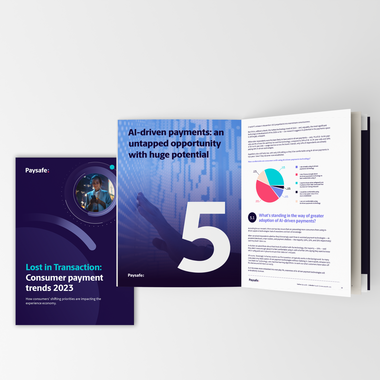
- Four minutes read
Consumers embrace experiences and raise payments expectations as living costs continue to soar
It may be no surprise that consumers are adapting the way they spend, with change dictated by tighter budgets and an uncertain economic outlook. But the way spending is changing is presenting consumer-facing businesses with both challenges and opportunities.
According to our latest Lost in Transaction report, in which we interviewed 14,500 consumers in 14 countries across Europe and the Americas to find out about the latest consumer payment trends, customers are demanding better experiences and more control in the way they spend.
So how can businesses adapt to these shifting priorities and demands, particularly around payments?
For consumers, experience matters
When the cost-of-living crisis began tightening its grip on consumers, you’d be forgiven for thinking that experiential spending – from dining out, to cinema trips, to online video-gaming – would suffer.
However, demand is still strong for travel, leisure, online video-gaming, and other experiences, with over half (51%) of respondents still prioritising them over other discretionary spend. Some (27%) are even spending more on dining out and takeaways than before the cost-of-living crisis.
Very few respondents stopped discretionary spending altogether. Only 7% stopped spending on streaming services, takeaways, and eating out, for example.
But while consumers are still spending, they’re becoming more selective – only shelling out in ways that best suits them. This extends to the payment experience.
Control is essential for consumer payments
When it comes to payment preferences, the type of experience inevitably impacts how consumers choose to pay. Debit cards still reign for takeaways (42%), for example, while credit cards are most used for long-haul flight tickets and holidays (both 34%).
In the case of online gaming and iGaming, trust is the single biggest factor in how consumers pay. According to 67% of those who make online gambling purchases, their level of trust in payment methods influences how much they spend. This is the same for 66% of those who make online gaming purchases.
Similarly, the other top priorities for consumers making online gaming purchases or placing online bets are privacy, security, and control.
This final point is notable, with many consumers switching payment methods to gain the control they demand. For example, 71% of respondents who have changed payment habits use debit cards more often than they did a year ago.
Other payment methods on the rise among consumers over the past year are digital wallets (69%) and online cash, or eCash (60%). In fact, eCash has seen the biggest jump in usage since 2022 – in our last report, 13% of respondents told us they were paying with eCash more often than they were in 2021. For merchants, offering payment methods that deliver control over spending is a must in 2023 and beyond.
Dealing with disruption
Finally, it’s time to interrogate another shift in consumer spending: a growing reliance on deals. Everyone loves a ‘Reduced’ sticker, and now, deals have become an increasingly pressing priority for consumers on the hunt for goods, with two-thirds of respondents (67%) stating they’re more likely to make purchases during Black Friday and other seasonal sales or discounting events. For merchants, compelling promotions could play a huge role in incentivising more customers to buy.
In addition, customers are increasingly mindful of their shopping habits, with 61% more likely to repair an item than replace it with a new one. Meanwhile, 47% had second thoughts over abandoning their carts due to budget constraints.
If this sounds ominous, it’s important to remember that higher customer expectations can be a good thing for your business, pushing you to adapt and improve to deliver the experience they demand – with no surprise shipping fees, a variety of trustworthy payment options to meet consumer preferences, and a seamless payment process.
To learn more about changing consumer payment habits in 2023, check out our Lost in Transaction report: Consumer Payment Trends 2023: How consumers’ shifting priorities are impacting the experience economy.




